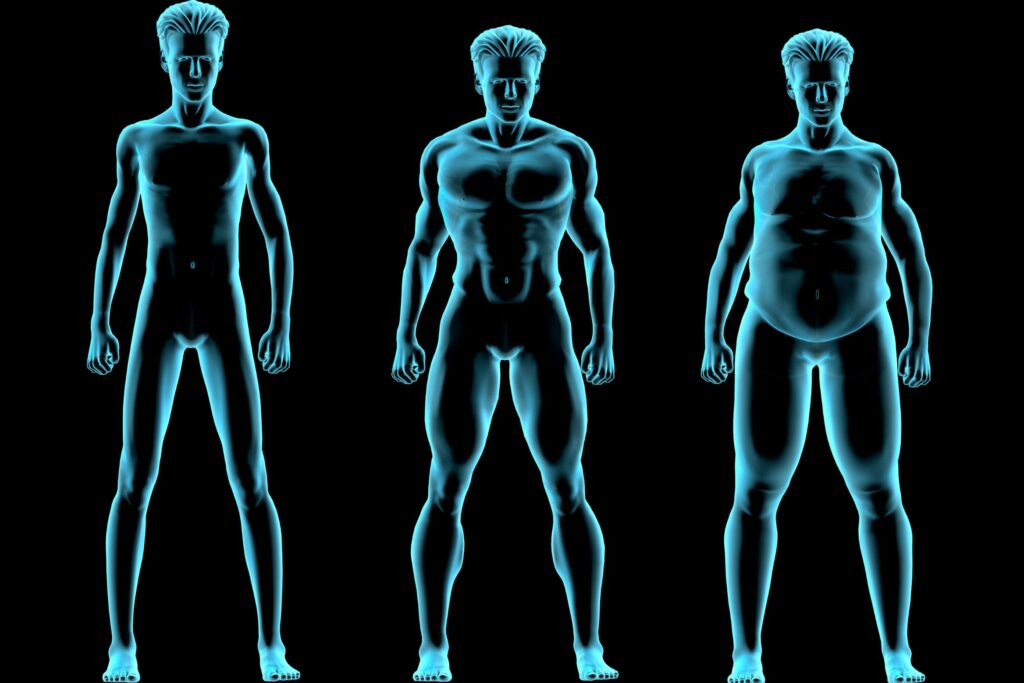Muscle Growth: How Fast Does It Really Happen?
Muscle Growth: How Fast Does It Really Happen?

We’ve all seen the headlines in magazines and online: “Six-Pack in 14 Days” or “Noticeable Muscle Gains in Just One Week!” As appealing as these claims sound, they’re far from realistic. Even with extreme measures, achieving such rapid results is nearly impossible. So, let’s take a closer look at the real science behind muscle growth.
Muscle Growth Is Unique to Each Individual
Just like any aspect of fitness, building muscle takes time and dedication. A well-structured training program paired with proper nutrition is key to success, but the rate at which muscle growth happens varies from person to person. Even if two people follow the same workout routine and diet, their results can be vastly different.
Key Factors That Influence Muscle Growth
Muscle growth is largely dependent on two critical factors: genotype and phenotype.
- Genotype refers to your genetic makeup. It’s essentially the blueprint for how your body functions.
- Phenotype reflects your physical traits—how your body looks and performs.
Gender also plays a significant role. Men, for instance, produce more testosterone, a hormone essential for muscle building. While these factors are largely out of your control, you can optimize certain aspects of your lifestyle to boost your progress.
Here are some factors that can influence how quickly you build muscle:
1. Age at the Start of Training
Starting young gives you a head start, as muscle growth is generally easier when you’re younger, but it’s never too late to begin.
2. Physical Activity in Childhood
Active children tend to build stronger foundations for future muscle growth.
3. Training Load
The intensity and volume of your workouts matter. Progressive overload is crucial to stimulating muscle fibers.
4. Training Frequency
How often you train each muscle group impacts growth. Finding the right balance between rest and work is key.
5. Recovery After Training
Muscles grow during recovery, not while you’re at the gym. Quality sleep, rest days, and recovery techniques are essential.
6. Protein and Carbohydrate Intake
Protein provides the building blocks for muscle repair, while carbs fuel your workouts and recovery. Both are critical for gains.
7. Total Caloric Intake
To build muscle, you need to be in a caloric surplus—eating more calories than your body burns.
8. Hydration
Staying hydrated helps with performance and recovery. Water is often overlooked but is a vital component of muscle growth.
9. Hormonal Influences
Hormones like testosterone, growth hormone, and insulin play a significant role in muscle development. These can be influenced by your lifestyle, stress levels, and even sleep patterns.
Understanding Different Body Types in Strength Training
When it comes to building muscle and strength, individuals vary greatly in their natural predispositions. These differences are largely attributed to genetic factors that determine our body types, or somatotypes. Understanding your body type can help you tailor your training and nutrition strategies for optimal results.
The Three Main Somatotypes
- Mesomorphs: Naturally muscular and athletic, mesomorphs tend to have a medium build, broad shoulders, and narrow waist. They typically find it easier to gain muscle and lose fat.
- Endomorphs: Characterized by a larger bone structure and higher body fat percentage, endomorphs often have a rounder or softer appearance. While they may struggle with fat loss, they can quickly build significant muscle mass.
- Ectomorphs: Typically lean and long-limbed, ectomorphs often have difficulty gaining weight, whether it’s muscle or fat. They usually have a fast metabolism and may need to eat more and train harder to see muscle gains.
Important considerations
- Genetics plays a crucial role in determining each individual’s upper limit of achievable muscle mass.
- The rate and extent of muscle growth are significantly influenced by factors that are largely beyond our control, such as hormone levels and muscle fiber type distribution.
- While we can’t change our genetic makeup, we can optimize our training, nutrition, and recovery strategies to make the most of our natural potential.
- It’s important to note that most people are not pure examples of one somatotype but rather a combination of two or more types.
Understanding your body type can help set realistic expectations and guide your approach to strength training. However, regardless of your somatotype, consistent effort, proper nutrition, and smart training can lead to significant improvements in strength and physique.

Ectomorph, Mesomorph, Endomorph
The Role of Muscle Fibers in Strength Training
Muscle fiber composition plays a crucial role in determining an individual’s strength and muscle-building potential. There are two main types of muscle fibers:
- Fast-twitch (Type II) fibers: These fibers contract quickly and are responsible for explosive movements. They have a higher potential for size and strength gains.
- Slow-twitch (Type I) fibers: These fibers are more efficient for endurance activities and are slower to fatigue.
People with a higher proportion of fast-twitch muscle fibers generally have an advantage in strength training and muscle building. For a long time, scientists believed that the ratio of these fiber types was entirely genetically predetermined. However, recent research has shown that the composition of muscle fibers can be slightly altered through specific training methods:
- Resistance training can increase the size of fast-twitch fibers
- Endurance training can improve the oxidative capacity of both fiber types
- Some studies suggest that electrical muscle stimulation may influence fiber type composition
It’s important to note that while training can influence fiber-type characteristics to some degree, the potential for change is limited. As the saying goes, „The best marathon runner will never become an excellent sprinter,“ and vice versa.
Muscle Growth Rate: What to Expect
The rate of muscle growth varies significantly between individuals due to factors such as genetics, age, gender, and training experience. Based on research:
- A young man with favorable genetics and a high proportion of fast-twitch muscle fibers might gain up to 0.9 kg (2 pounds) of muscle mass per month under optimal conditions.
- Individuals with less favorable genetics might gain about 0.23 kg (0.5 pounds) of muscle mass per month, even with optimal training.
These figures represent the upper limits of natural muscle growth. It’s crucial to set realistic expectations and understand that consistent, long-term effort is key to achieving significant muscle gains. Factors such as proper nutrition, adequate rest, and progressive overload in training all play vital roles in maximizing muscle growth potential. Remember, everyone’s journey is unique, and comparing your progress to others can be counterproductive. Focus on your consistent improvement and enjoy the process of becoming stronger and healthier.
Optimal Training Strategies for Muscle Growth
To effectively build muscle mass, a well-structured training program is essential. The most effective approach for muscle hypertrophy (growth) typically follows these guidelines:
- Sets: 3 to 6 per exercise
- Repetitions: 6 to 12 per set
- Intensity: 70 to 85 percent of your one-repetition maximum (1RM)
- Rest periods: 30 to 90 seconds between sets
This protocol is designed to create the optimal balance of mechanical tension, muscle damage, and metabolic stress – the three primary factors that drive muscle growth.
Considerations for Beginners
While hypertrophy training can be highly effective, it’s not recommended for complete beginners. Here’s why:
- Technique mastery: It’s crucial to have a solid foundation in proper exercise form before increasing intensity. This helps prevent injuries and ensures you’re targeting the right muscles.
- Neural adaptations: Beginners often experience strength gains due to improved neuromuscular efficiency rather than muscle growth. A period of foundational strength training can enhance this process.
- Progressive overload: Starting with lighter weights and gradually increasing the load allows your body to adapt safely over time.
Free Weights vs. Machines
Research suggests that training with free weights (barbells, dumbbells) may be more effective for muscle growth compared to machine-based exercises. Free weights offer several advantages:
- They engage more stabilizer muscles
- They allow for more natural movement patterns
- They typically activate more muscle fibers
However, free weights also require more skill and coordination. This is why it’s highly recommended for beginners and even intermediate lifters to:
- Work with a qualified personal trainer or experienced training partner
- Focus on proper form and technique before increasing weights
- Use a spotter for challenging exercises, especially compound lifts like bench presses and squats
Remember, the most effective training program is one that you can consistently follow while progressively overloading your muscles. Whether you use free weights, machines, or a combination of both, the key is to train safely, consistently, and with appropriate intensity for your fitness level.
